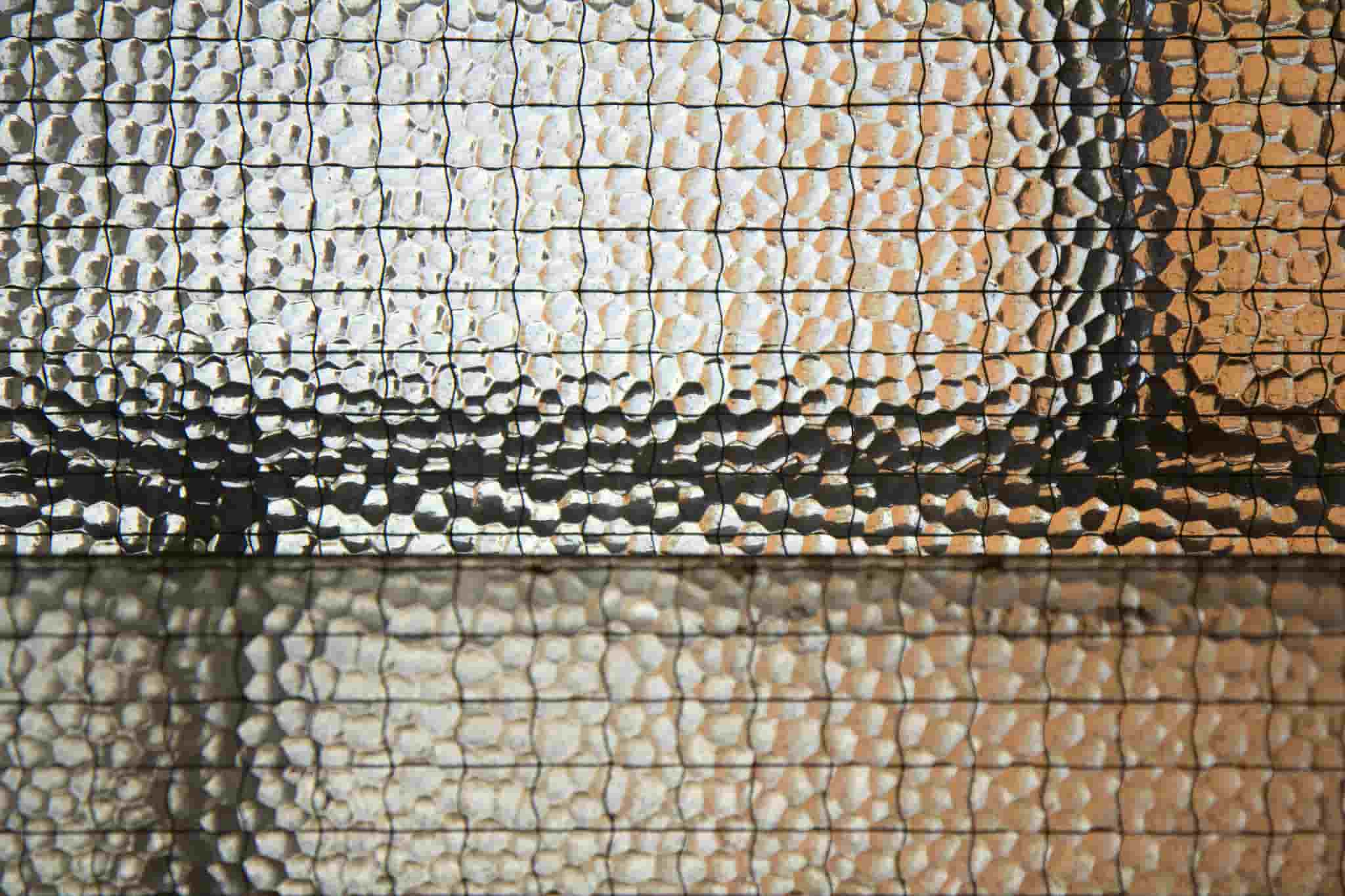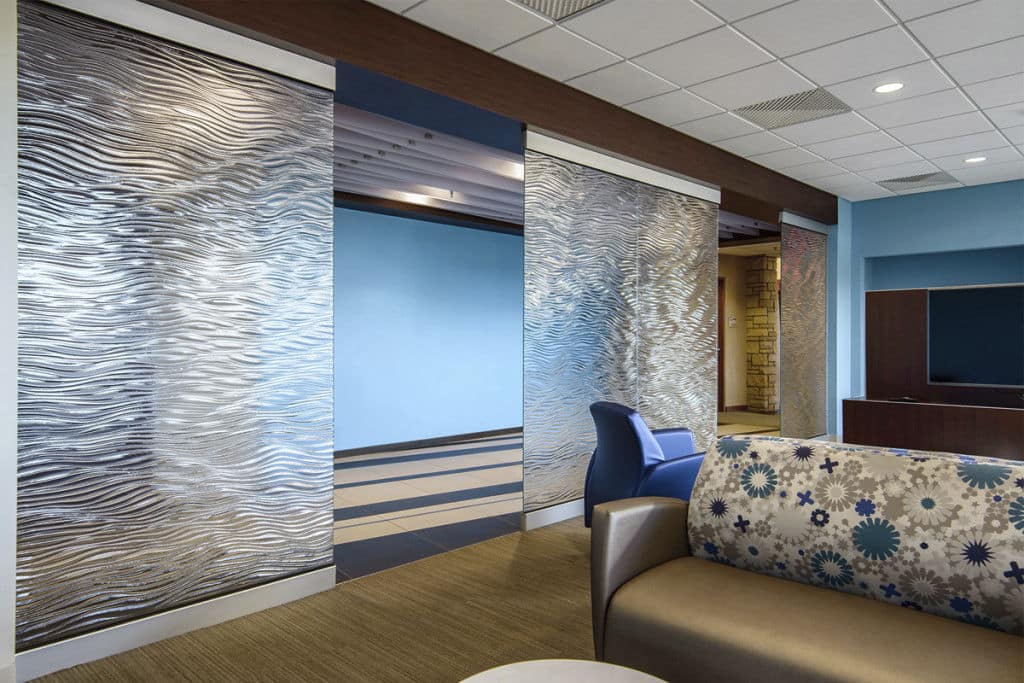
In modern architecture, glass is an essential material as it provides flexibility and aesthetics to the structure. Glass is a versatile material which is used in building industry since ancient times. Glass is more sustainable material as compared to concrete, as it does not emits carbon dioxide in the air. Nowadays, glass is widely used in facades of steel framed structures.
Glass is also used to enhance the aesthetics of a structure. Patterned glass is one type of decorative glass, which has patterns and textures printed on it. It is widely used as an architectural glass. Here we have given brief information on patterned glass, its features, and applications which homeowners should know before buying glass for their house.

Courtesy – Glass Making
What is Patterned Glass
Patterned glass also called as textured glass, figured glass, and obscure glass is a decorative glass with patterns imprinted on one face of the glass. The light when passing through patterned glass diffuses due to the presence of patterns. As a result of this, we cannot see through a patterned or textured glass. It offers a translucent surface and hence provides privacy.
The pattern or texture is imprinted on a glass by passing molten glass on the rollers which have a negative impression of the pattern. After passing through rollers, the glass is cooled in annealing lehr, and then the patterned glass is cut according to the requirements. Textured glass is available in a variety of designs and patterns. Tinted patterned glasses are also available which impart colourful aesthetics when used.
Size and Thickness:
Patterned glass is generally available in thickness of 4 mm and 6 mm. The standard size of the glass sheet is 2160 mm X 1650 mm.
Features of Patterned Glass:
- Variety of designs and patterns are available in patterned glass. It can also be combined with frosted glass to create innovative designs.
- Patterned glass provides privacy without compromising natural light. When compared with float glass, it allows slightly less light transmission.
- It gives a feeling of more space in smaller areas, by diffusing and spreading light.
- Textured glass creates a relaxed environment by diffusing sunlight. It suits with almost all styles of interior designs.
- Different patterns provide a different level of obscuration (transparency). If more privacy is required, we can select pattern which gives opaque surface.
- It can be combined with wired glass and used where privacy, as well as fire resistant property, is required.

- Patterned glass can be laminated or tempered for application as safety glass.
- It can also be used in insulated glass units to provide privacy in commercial structures.
Applications:
- It is typically used where privacy is required simultaneously with natural light.
- It is used in interior applications such as doors (mostly entrance doors), windows, wall cladding, table tops, counters, shelves, backsplashes, furniture, etc.

Courtesy – Orangeless

Courtesy – Archiexpo
- Patterned glass is extensively used in glass partitions in homes as well as in corporate offices to maintain the confidentiality.
- When combined with frosted glass, patterned glass is used in shower cubicles in bathrooms and also in balustrades.
- It is also used in glass furniture and patio furniture.
- Patterned glass is also used to make decorative glassware.
- Textured glass is used in commercial glazing, hospitals, hotels, restaurants, entertainment centres, etc.
Patterned glass offers ambience to any interior design style and is the most widely used decorative glass. It is little expensive than float glass but provides better aesthetics. It has wide application in interior partitions.
Also Read:
History of Glass & Its Invention for Window
Advantages & Disadvantages of Glass as a Building Material
Sheet & Plate Glass: All You Need to Know

































